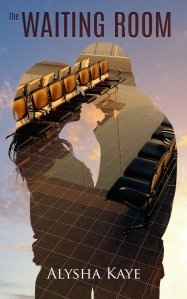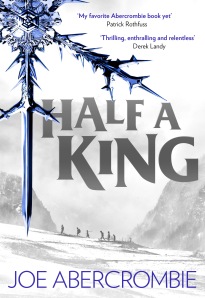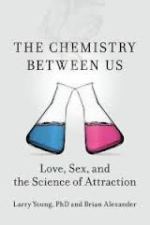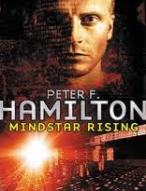The Water Knife by Paolo Bacigalupi (Orbit, 2016)
“Sweat was a body’s history, compressed into jewels, beaded on the brow, staining shirts with salt. It told you everything about how a person had ended up in the right place at the wrong time, and whether they would survive another day.’
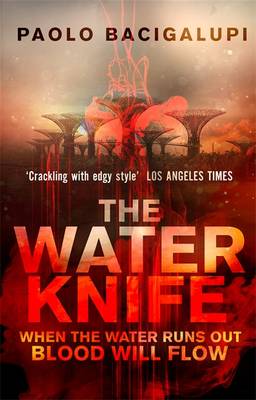 This quote from page one of The Water Knife gives the reader a taste of the desperation of people struggling to survive in a world where water is a precious commodity. Those cities with ‘senior water rights’ are building archologies (self-sustaining environments, with clean air, plenty of water and all the amenities the modern world takes for granted), while the majority of the population buy water from Red Cross pumps and wear masks against the constant dust-storms (well, those that can afford to—a dry, hacking cough is the norm outside of the archologies).
This quote from page one of The Water Knife gives the reader a taste of the desperation of people struggling to survive in a world where water is a precious commodity. Those cities with ‘senior water rights’ are building archologies (self-sustaining environments, with clean air, plenty of water and all the amenities the modern world takes for granted), while the majority of the population buy water from Red Cross pumps and wear masks against the constant dust-storms (well, those that can afford to—a dry, hacking cough is the norm outside of the archologies).
Set primarily in the state of Arizona, more specifically Phoenix, the three main protagonists are drawn into the battle over water rights—rights that will give the owner power of life and death over thousands as the water supply to whole cities can be cut by the stroke of a ‘legal’ pen.
Angel—the ‘water knife’ of the title—works for Catherine Case, the leader and ruthless driving force behind the relative prosperity of Las Vegas. Recruited by Case from prison as a young man, he is now a highly trained ‘water knife’ and does whatever it takes to secure the water rights of Las Vegas and the state of Nevada.
In the opening chapter Angel ‘serves papers’ on a water refinery and then escapes as it is blown up. The city it supplies has no other source of water. “It’s the end of times,” he muses as he watches the flames. “Guess that makes me the Devil.” Despite this, Angel (note the name) understands and empathises with the desperation of others. He sees the world for what it is, and harbours no illusions about the future. He does what needs doing. Driving through the desert, he reflects that it is the truest place he’s ever known—“it’s always been a gaunt and feral thing”. Unlike Texas, which had pumped up ice-age water and “thrown on the garments of fertility, pretending to greenery and growth… realising too late that their prosperity was borrowed.”
Lucy is a prize winning reporter, who left the relatively water-rich north (it still rains there) to write about the deprivations suffered by the people of Phoenix—a city struggling to survive the permanent drought—and the Texan refugees who everyone reviles. Texas was the first state to collapse, its population flooding neighbouring states until borders were closed. Lucy is looking for a big story, which she finds when she becomes embroiled in the fight over water rights. After years of bowing to pressure: “All the things you don’t say… All the stories you teach yourself not to tell.” Lucy posts a story that pulls-no-punches, a story that makes her a target for both political and criminal powerbrokers.
Angel feels a powerful connection to Lucy. They had both “seen too much and had given up on pretending the world was anything but a wreck.” Lucy is attracted to Angel, both in his role as a dangerous killer, and in his unguarded moments as “the boy before the water knife.” Betrayal is a key theme, though it’s generally depicted and understood by the parties involved as: nothing personal, just business. Angel is the one person who is steadfastly loyal.
Maria is a teenager struggling to survive alone after the death of her father. She collects water from the Red Cross pumps and sells it on for a small profit to construction workers. Her best friend ‘sells ass’. They are both Texans, the lowest of the low, who are forced to ‘kick up’ part of their earnings to a local crime lord. Despite her best efforts, Maria ends up in the ‘right place at the wrong time’ and her life is forfeit.
Angel is an unlikely saviour. Twice he uses Maria as a foil to save himself, but in both cases she is also ‘saved’. There is one question that she asks several times in the book: “Why do you care?” It points to the harsh reality of her life, and the lessons she learns as the story progresses. She has an impact on Angel: “He had a sudden overwhelming need to balance all the things in the world that couldn’t be balanced.”
This book depicts a world after the devastating impact of climate change. The characters take this fact as a given, and so the only reference is an advert on bottled water: “Your purchase helps us mitigate the impacts of climate change on vulnerable peoples around the world.”
In the struggle between California, Arizona and Nevada for valuable water rights, it seems that there is no ‘right’ thing to do (despite Lucy’s protestations). No matter who wins, there has to be losers. As Angel says: “Someone’s got to bleed, if anybody’s going to drink.”
This is a masterful depiction of a society fighting to survive in a world damaged by greed and wilful blindness—another strong theme in the book. Bacigalupi takes us on a journey where we are confronted by the filters through which we view the world, and brings us face-to-face with difficult truths.
My favourite quote:
“If I could put my finger on the moment we genuinely fucked ourselves, it was the moment we decided that data was something you could use words like believe or disbelieve around.”
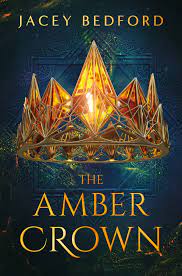
 I love the quiet discipline of adding colour to someone else’s kick-ass drawings. I have several fantasy-type colouring books, but my favourite by far is the ‘Terry Pratchett’s DiscWorld’. It is packed with Paul Kidby’s amazing illustrations.
I love the quiet discipline of adding colour to someone else’s kick-ass drawings. I have several fantasy-type colouring books, but my favourite by far is the ‘Terry Pratchett’s DiscWorld’. It is packed with Paul Kidby’s amazing illustrations. This quote from page one of The Water Knife gives the reader a taste of the desperation of people struggling to survive in a world where water is a precious commodity. Those cities with ‘senior water rights’ are building archologies (self-sustaining environments, with clean air, plenty of water and all the amenities the modern world takes for granted), while the majority of the population buy water from Red Cross pumps and wear masks against the constant dust-storms (well, those that can afford to—a dry, hacking cough is the norm outside of the archologies).
This quote from page one of The Water Knife gives the reader a taste of the desperation of people struggling to survive in a world where water is a precious commodity. Those cities with ‘senior water rights’ are building archologies (self-sustaining environments, with clean air, plenty of water and all the amenities the modern world takes for granted), while the majority of the population buy water from Red Cross pumps and wear masks against the constant dust-storms (well, those that can afford to—a dry, hacking cough is the norm outside of the archologies). Law’, even though said king is dead—betrayed by the Dukes whose greed and corruption is driving Tristia to its knees.
Law’, even though said king is dead—betrayed by the Dukes whose greed and corruption is driving Tristia to its knees.